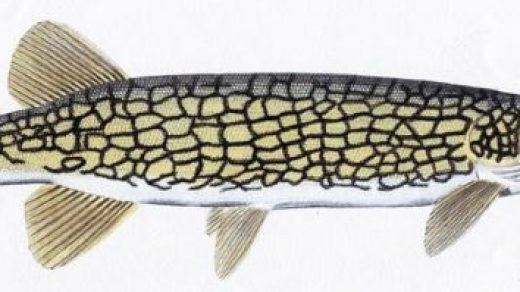
In the heart of Texas, where the sun paints the landscape in warm hues and the waters shimmer with life, lies a crucial moment in the lifecycle of the bluegill fish. As anglers and enthusiasts alike eagerly await the opportune time to engage in this beloved pastime, understanding the intricate rhythm of nature becomes paramount. Among the fundamental questions that arise is the timing of the bluegill spawning season in the Lone Star State.
With its diverse aquatic ecosystems ranging from expansive reservoirs to winding rivers, Texas offers a rich tapestry for the bluegill to thrive. Yet, within this dynamic environment, there exists a delicate balance dictated by seasonal changes and natural cues. Discerning when the bluegill embark on their reproductive journey unveils not only a captivating aspect of their biology but also holds the key for anglers seeking to capitalize on prime fishing moments.
Now, let us delve into the depths of bluegill reproduction and unlock the mysteries of their spawning season in the vibrant waters of Texas.
Unlocking Nature’s Calendar: Bluegill Spawning in Texas
In the intricate web of nature’s cycles, the timing of bluegill spawning in Texas is a meticulously orchestrated affair, synchronized with the rhythm of the seasons and the subtle shifts in water temperature. As spring breathes new life into the landscape, signaling the awakening of flora and fauna alike, the bluegill prepare to embark on their annual reproductive journey.
The precise timing of bluegill spawning hinges primarily upon water temperature, a critical environmental cue that triggers their instincts. In Texas, this pivotal event typically occurs during the spring months, when water temperatures climb to the ideal range for spawning. As temperatures begin to rise, usually reaching between 65 to 75 degrees Fahrenheit (18 to 24 degrees Celsius), bluegill enter a state of readiness, primed to commence their reproductive activities.
The sprawling water bodies of Texas offer a diverse array of habitats for bluegill to inhabit, from tranquil ponds and meandering streams to expansive reservoirs and winding rivers. Each of these environments possesses its own unique characteristics, influencing the timing and intensity of bluegill spawning within its waters. In shallower bodies of water, where the sun’s rays penetrate deeply, warming the substrate and stimulating aquatic vegetation growth, bluegill may initiate spawning earlier than in deeper, cooler reservoirs.
Furthermore, the lunar cycle also plays a subtle yet significant role in bluegill spawning behavior. Many fish species, including bluegill, exhibit a preference for spawning during specific lunar phases, often coinciding with the full moon or new moon. These lunar cues are thought to optimize the chances of successful fertilization and enhance offspring survival by leveraging the gravitational forces that influence water movement and predator activity.
For anglers and fisheries managers alike, understanding the nuances of bluegill spawning in Texas is invaluable. Armed with this knowledge, anglers can strategically plan their fishing excursions, targeting spawning grounds during the peak of activity to maximize their catch. Additionally, fisheries managers can implement conservation measures to safeguard bluegill populations during this vulnerable period, ensuring the long-term sustainability of this prized game fish.
Nesting Behavior and Habitat Selection
In the intricate dance of courtship and reproduction, bluegill exhibit fascinating nesting behavior and display a keen preference for specific habitats conducive to successful spawning. As the water temperature continues to climb and the urge to propagate intensifies, male bluegill assume the role of diligent caretakers, meticulously preparing nest sites to entice potential mates.
Nest construction is a meticulous process, undertaken with precision and care by male bluegill as they scour the substrate for suitable locations. Shallow areas with sandy or gravelly bottoms are preferred, providing the necessary stability for nest formation and offering protection against potential predators. Once a suitable site is identified, male bluegill begin the arduous task of excavating depressions in the substrate, using their fins and mouths to remove debris and create a shallow bowl-like structure known as a nest.
These nests serve as the focal point of courtship and spawning activity, attracting female bluegill through a combination of visual displays and pheromonal cues. Male bluegill, adorned in their vibrant breeding colors, vigorously defend their nests against intruders and rival males, engaging in elaborate displays of aggression to assert dominance and secure their reproductive success.
Female bluegill, discerning in their choice of mates, carefully evaluate potential partners based on the quality of their nest sites and the vigor of their displays. Once a suitable mate is selected, the pair engages in a delicate courtship dance, circling each other in a synchronized manner before spawning occurs. During spawning, female bluegill release their eggs into the water, while male bluegill fertilize them externally, ensuring the continuation of their lineage.
In addition to the nesting behavior of bluegill, habitat selection plays a crucial role in the success of spawning efforts. Bluegill exhibit a preference for structurally complex habitats such as submerged vegetation, fallen trees, and brush piles, which provide shelter for both adults and offspring. These habitats not only offer protection from predators but also serve as valuable foraging grounds, supporting the growth and development of young bluegill.
Understanding the nesting behavior and habitat preferences of bluegill is essential for anglers seeking to target spawning fish effectively. By identifying prime nesting areas and presenting baits or lures that mimic natural prey items, anglers can increase their chances of success and enjoy the thrill of catching bluegill during this exciting period of reproductive activity.
Parental Care and Fry Survival
Following the exhilarating climax of spawning, male bluegill assume the vital role of parental caretakers, safeguarding their precious offspring and ensuring their survival in the perilous waters of Texas. This phase of parental care is characterized by unwavering dedication and vigilance as male bluegill diligently guard their nests and nurture their developing fry.
Once spawning is complete, male bluegill assume sole responsibility for nest maintenance and fry protection, exhibiting a remarkable degree of attentiveness to their offspring. They remain steadfastly stationed near their nests, patrolling the surrounding area and fending off potential threats from predators and intruders. Any unwelcome visitors, from marauding turtles to opportunistic bass, are met with fierce aggression as male bluegill valiantly defend their brood.
During this critical period, male bluegill also engage in diligent nest maintenance, ensuring the integrity of their nesting sites and the well-being of their developing fry. They use their fins to fan water over the eggs, aerating them and preventing the buildup of sediment that could smother the delicate embryos. Additionally, male bluegill remove any debris or detritus that accumulates within the nest, maintaining a clean and hospitable environment for their young.
As the eggs hatch and tiny fry emerge into the world, male bluegill continue their vigilant guardianship, herding their offspring into tightly knit schools and guiding them through the labyrinthine waterscape. They provide protection and guidance, teaching their young to forage for food and evade predators with skillful maneuvering and swift reflexes.
The presence of paternal care significantly enhances the survival chances of bluegill fry, providing them with essential protection and guidance during the vulnerable early stages of life. By investing time and energy into parental care, male bluegill contribute to the resilience and sustainability of bluegill populations, ensuring the perpetuation of their species for generations to come.
For anglers and naturalists alike, witnessing the spectacle of parental care among bluegill serves as a poignant reminder of the profound bonds that exist within the natural world. It underscores the importance of stewardship and conservation efforts aimed at preserving the delicate balance of aquatic ecosystems, ensuring that future generations may continue to marvel at the wonders of nature’s creations.
Challenges and Conservation Efforts
Despite the remarkable resilience of bluegill populations, they face an array of challenges that threaten their continued well-being in the waters of Texas. Human activities such as habitat alteration, water pollution, overfishing, and the introduction of invasive species exert significant pressure on bluegill populations, disrupting their natural habitats and depleting their numbers.
One of the most pressing threats to bluegill populations in Texas is habitat loss and degradation. Urbanization, agricultural expansion, and land development have led to the destruction of vital aquatic habitats, including wetlands, marshes, and riparian zones, which serve as critical breeding and foraging grounds for bluegill and other aquatic species. The loss of these habitats not only diminishes the available spawning grounds for bluegill but also disrupts the intricate web of ecological interactions upon which they depend.
Water pollution poses another serious threat to bluegill populations, compromising water quality and habitat suitability. Runoff from agricultural fields, industrial facilities, and urban areas introduces pollutants such as pesticides, fertilizers, heavy metals, and sediment into waterways, contaminating bluegill habitats and impairing their health and reproductive success. Elevated levels of pollutants can weaken bluegill immune systems, disrupt hormonal balance, and impair reproductive function, leading to reduced spawning success and diminished population resilience.
Overfishing is also a concern in some areas, where bluegill populations are heavily targeted by recreational anglers and commercial fisheries. Unsustainable harvesting practices, including the use of gill nets, traps, and other non-selective fishing gear, can exert excessive pressure on bluegill populations, resulting in overexploitation and population declines. Additionally, the introduction of invasive species such as predatory fish and aquatic plants further exacerbates the plight of bluegill, outcompeting native species for resources and disrupting fragile ecosystems.
In response to these threats, concerted efforts are underway to conserve and protect bluegill populations in Texas and ensure their long-term sustainability. Habitat restoration projects aim to rehabilitate degraded aquatic habitats and create new spawning grounds for bluegill and other native species. Water quality monitoring programs track pollution levels and implement measures to reduce nutrient runoff and mitigate the impacts of contaminants on aquatic ecosystems.
Fisheries management strategies, including size and bag limits, seasonal closures, and habitat enhancement initiatives, seek to regulate fishing pressure and promote sustainable harvest practices that balance the needs of anglers with the conservation of bluegill populations. Public education and outreach campaigns raise awareness about the importance of bluegill conservation and encourage responsible stewardship of aquatic resources among anglers, boaters, and recreational enthusiasts.
Cultural Significance and Recreational Pursuits
Beyond its ecological importance, the bluegill holds a revered place in the cultural tapestry of Texas, weaving its way into the fabric of local traditions, folklore, and recreational pursuits. For generations, Texans have forged deep connections with this iconic fish, celebrating its abundance, resilience, and sporting prowess.
In many communities across Texas, bluegill fishing serves as a cherished pastime, bringing together families, friends, and neighbors in pursuit of angling adventures. From the tranquil solitude of a secluded pond to the bustling camaraderie of a community fishing derby, bluegill fishing offers a gateway to the natural world and a respite from the hustle and bustle of modern life.
For many anglers, catching bluegill represents a rite of passage, a timeless tradition passed down from generation to generation. From the thrill of feeling a gentle tug on the line to the satisfaction of landing a trophy-sized specimen, bluegill fishing evokes a sense of wonder and excitement that transcends age, gender, and background.
In addition to its recreational appeal, the bluegill also holds a special place in the culinary traditions of Texas, serving as a delicious and nutritious source of sustenance for those who know how to prepare it. Whether fried to golden perfection in a cast-iron skillet, grilled to smoky perfection over an open flame, or simmered in a savory fish stew, bluegill delights the senses and nourishes the soul, embodying the essence of Southern hospitality and culinary ingenuity.
Moreover, the bluegill’s role as a keystone species in Texas’ aquatic ecosystems extends beyond its value as a game fish or food source. Its presence influences the health and dynamics of aquatic communities, serving as a vital link in the food chain and contributing to the overall biodiversity and ecological resilience of Texas’ waters.
As Texans, we have a responsibility to cherish and protect the natural treasures that enrich our lives and define our identity as a state. By fostering a deeper appreciation for the bluegill and the ecosystems it inhabits, we can ensure that future generations inherit a legacy of clean water, abundant wildlife, and vibrant recreational opportunities for all to enjoy.
Conclusion: Embracing the Legacy of the Bluegill
As the sun sets on our exploration of the bluegill’s world in the vibrant waters of Texas, we are left with a profound appreciation for this iconic fish and the myriad wonders it embodies. From its humble beginnings in the tranquil ponds of East Texas to its enduring presence in the sprawling reservoirs of the Hill Country, the bluegill leaves an indelible mark on the landscape and our collective consciousness.
Through the lens of science, we have unraveled the mysteries of bluegill reproduction, delving into the intricate rhythms of spawning behavior and parental care that define their life cycle. We have marveled at their resilience in the face of environmental challenges, bearing witness to their adaptability and perseverance in the ever-changing waterscape of Texas.
Yet, beyond the realm of biology and ecology, the bluegill holds a deeper significance in the hearts and minds of Texans, serving as a symbol of cultural heritage, recreational pursuit, and environmental stewardship. As stewards of Texas’ natural resources, it is incumbent upon us to cherish and protect the legacy of the bluegill for future generations, ensuring that its timeless beauty and enduring spirit continue to inspire awe and wonder in all who encounter it.
So let us raise our voices in celebration of the bluegill, honoring its place in the rich tapestry of Texas’ aquatic heritage and embracing the responsibility to preserve and protect its legacy for generations to come. In the tranquil waters of Texas, amidst the rustling reeds and shimmering shallows, the bluegill reigns supreme, a true icon of the Lone Star State.




